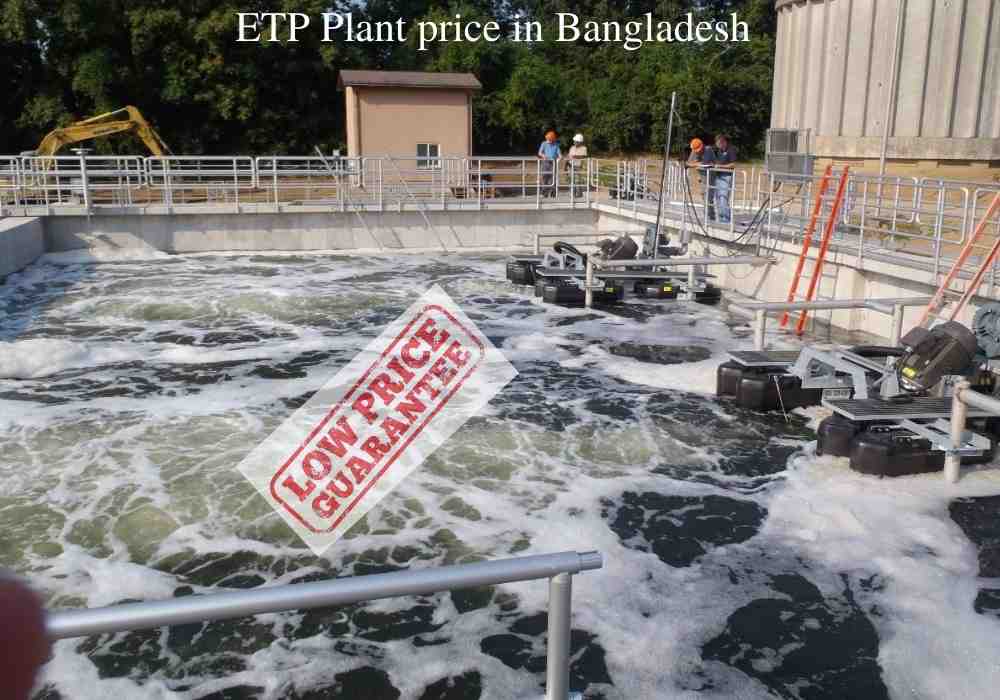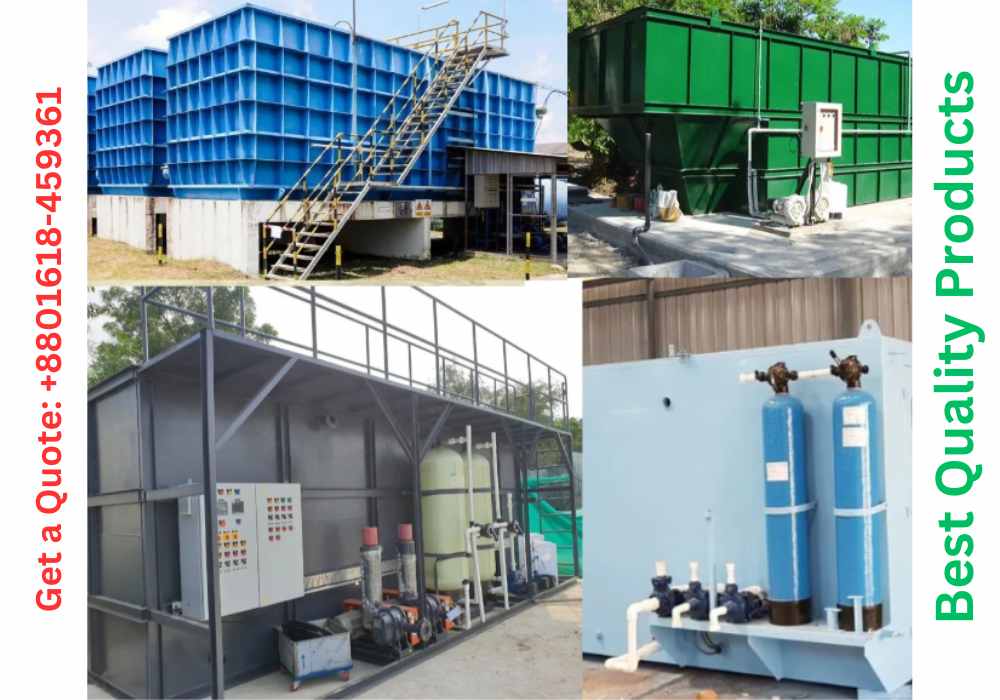High-Quality Effluent Treatment Plant Price in Bangladesh
The industrial landscape of Bangladesh is flourishing, with various sectors like textiles, food processing, chemicals, and leather playing a crucial role. While this economic growth is commendable, it’s equally important to ensure environmental sustainability. This is where effluent treatment plants (ETPs) come into play. These marvels of modern engineering treat wastewater generated by industries, removing pollutants and preventing environmental harm.
However, navigating the world of ETPs can be overwhelming, especially when it comes to costs. This comprehensive guide will shed light on high-quality effluent treatment plant prices in Bangladesh, delving into various factors influencing the cost, exploring financing options, and offering insights into operation and maintenance (O&M) expenses.

Wastewater Treatment Plant Capacity:
Before diving into costs, it’s essential to understand ETP plant capacity. This refers to the volume of wastewater the plant can treat effectively in a specific timeframe. ETP capacities are typically measured in cubic meters per day (m³/day).
Here’s a general range for ETP plant capacities in Bangladesh:
- Small-scale industries (up to 50 m³/day): This range caters to smaller facilities, with prices starting around BDT 600,000.
- Medium-scale industries (50-500 m³/day): This segment caters to mid-sized industries, with price ranges varying from BDT 1,000,000 to BDT 5,000,000.
- Large-scale industries (above 500 m³/day): This category caters to large industrial operations, with costs exceeding BDT 5,000,000 and potentially reaching BDT 10,000,000 or more.
Factors Influencing ETP Plant Price:
While capacity is a significant cost determinant, several other factors influence the final price of an ETP:
- Type of industry: Different industries generate wastewater with varying characteristics. For instance, textile effluent requires different treatment methods compared to chemical industry wastewater. This variation in treatment needs translates to differences in ETP design and consequently, price.
- Desired treatment level: The strictness of the desired effluent discharge standards plays a crucial role. Stringent discharge standards often necessitate advanced treatment technologies, pushing the price upwards.
- Plant design and materials: The complexity of the ETP design and the materials used in its construction significantly impact the cost. Advanced automation and high-quality materials come at a premium.
- Land availability and infrastructure: The size of the land required for the ETP and the existing infrastructure at the site can influence the cost. Additional infrastructure development might be necessary, adding to the overall expense.
Exploring Cost-Effective and Affordable ETP Solutions
While high-quality ETPs are crucial for environmental protection, cost remains a significant concern for many industries. Fortunately, several approaches can help make ETPs more cost-effective and affordable:
- Government subsidies and incentives: The Bangladeshi government offers various subsidies and incentives to encourage industries to adopt environmentally friendly technologies. These schemes can significantly reduce the upfront cost of ETPs.
- Exploring grants and loans: Several environmental organizations and financial institutions offer grants and loans specifically for effluent treatment projects. These financing options can ease the financial burden for industries.
- Optimizing ETP design: Consulting with experienced ETP manufacturers can help optimize the design to achieve the desired treatment level while minimizing unnecessary costs.
- Considering used or refurbished ETPs: In some cases, used or refurbished ETPs might be a viable option for industries with limited budgets. However, thorough inspection and evaluation are crucial before acquiring such equipment.

Beyond the Initial Cost Operation and Maintenance (O&M)
While the initial cost of an ETP is a crucial factor, it’s essential to consider the long-term operational and maintenance (O&M) expenses. These costs include:
- Energy consumption: ETPs require electricity to operate pumps, blowers, and other equipment. The energy efficiency of the chosen ETP design significantly impacts O&M costs.
- Chemicals and consumables: Various chemicals are often used in the treatment process, and their regular replenishment adds to the O&M expenses.
- Sludge disposal: The treatment process generates sludge, which requires proper disposal according to environmental regulations. Improper disposal can incur hefty fines.
FAQ
What is the typical price range for ETPs in Bangladesh?
The price of high-quality ETPs in Bangladesh varies depending on several factors, but generally falls within a range of BDT 600,000 to BDT 10,000,000 or more. Capacity, industry type, and desired treatment level significantly influence the cost.
Are there any cost-saving options for ETPs?
Yes, several options can make ETPs more affordable. These include government subsidies, grants and loans, optimized ETP design, and considering used or refurbished equipment. However, thorough evaluation is crucial for used options.
What are the ongoing costs associated with ETPs?
Beyond the initial investment, ETPs incur operational and maintenance (O&M) expenses. These include energy consumption, chemical replenishment, and proper sludge disposal, which is crucial for environmental compliance.
